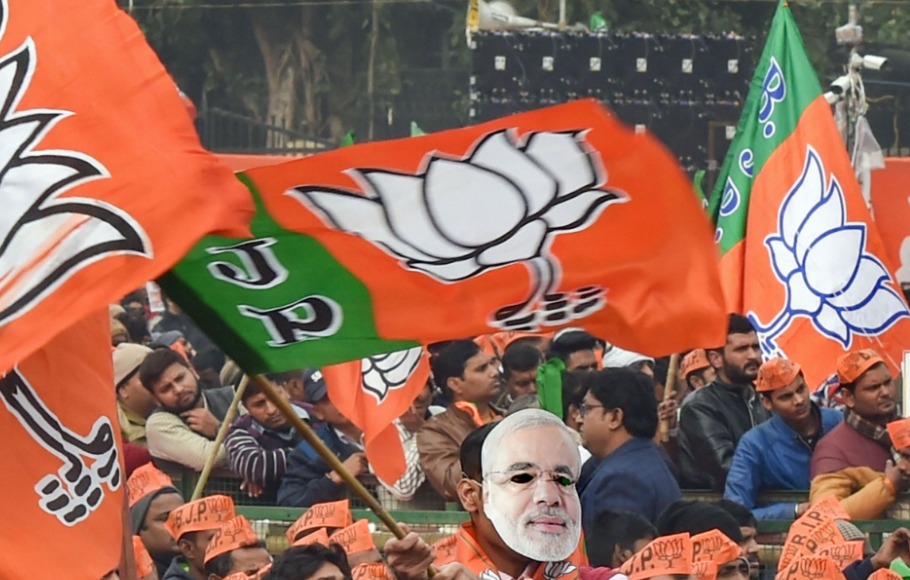
Ayodhya issue led to copycat disputes in Karnataka; gave BJP firepower

Karnataka has been the most successful state for the BJP electorally in south India, and it is tempting to assume that L K Advani’s rath yatra in 1990 and the Ayodhya dispute had something to do with it.
While the rath yatra and its passage through north Karnataka did evoke considerable attention, it did not directly result in the coming to power of the BJP in the state. There was an improvement in the vote share of the party in the Assembly elections held in 1994, the first after the rath yatra and the demolition of the Babri Masjid. But these were not enough for the BJP to snare power in Karnataka.
In the 1989 election, before the rath yatra, the BJP won four seats out of the 118 it contested. Five years later, in the next Assembly elections after the demolition of the Babri Masjid, it won 40 out of the 223 it contested and in fact came second after the Janata Dal which came to power.
In terms of vote share, the BJP in the 1989 elections could just about manage 4.14 per cent of the votes. In comparison, the Congress had a 43.76 per cent of the vote share while the Janata Dal secured 27.08 per cent. Later, in 1994, the BJP managed to garner 16.99 per cent of the vote share, four times that in 1989. The Congress dipped to 26.95 per cent while the Janata Dal climbed to 33.54 per cent.
Related news: Ayodhya dispute had far-reaching impact on Kerala society, but not electorally
The increase in the seats and vote share of the BJP had a direct link to the Ayodhya dispute and the ensuing political activity in the state. Interestingly, there had always been a strong presence of the RSS network in Karnataka. But, the BJP had not managed to convert it to its electoral advantage.
Way back in 1983, when the first non-Congress coalition government headed by the Janata Party came to power in Karnataka, the BJP had been a coalition partner, with 18 seats to its credit. Its vote share then was 7.93 per cent. But then, in elections that were held subsequently – in 1985 and 1989, the BJP’s vote share and the number of seats it won reduced drastically.
In that sense, Advani’s yatra and the Ayodhya dispute did succeed in galvanising the party cadres in the state and attracted sections of the population who had earlier either supported the Congress or the Janata Dal.
After 1992, realising the potential of a dispute like the one in Ayodhya, the party attempted to pick up similarly polarising issues like the Idgah Maidan controversy in Hubli and the Bababudangiri dispute in Chikmagalur. They probably worked to some extent but neither fanned into a statewide movement. Both were restricted to their respective districts.
Related news: Jai Shree Ram, ho gaya kaam: Mosque falls in Ayodhya, BJP rises in Delhi
But both Idgah and Bababudangiri received wide media coverage and were talking points across the state. The Idgah Maidan controversy was eventually resolved while the Bababudangiri dispute too was all but settled through a compromise between two warring groups aided by judicial intervention.
The Idgah Maidan was a centrally located land in Hubli city which had been leased to a Muslim organisation, the Anjuman-e-Islam in the 1920s for the purposes of prayers. When the organisation attempted to build structures in it in the early 1990s, a local Hindu organisation backed by the BJP opposed it.
Party activists backed by national leaders like Murali Manohar Joshi and Uma Bharati attempted to use the ground ostensibly to hoist the national flag and celebrate the birthdays of their leaders.
After a bout of violence in which a few were killed, the dispute was defused with the courts allowing the ground to be used for public purposes by both organisations. The Idgah Maidan issue, running in parallel with the dispute in Ayodhya, resulted in communal polarisation to an extent across the state.
Related news: Regionalism beats Rath Yatra in Andhra Pradesh
The Bababudangiri dispute revolved around the shrine of a Sufi saint atop a mountain near the coffee estate town of Chikmagalur. Hindu activists had for long claimed that the shrine was originally the temple of Dattatreya. But the shrine was in the control of a Sufi family, the descendants of the Sufi saint, Bababudan, whose tomb lay there.
Eventually, the courts ruled that the Hindu groups could hold the Dattatreya Jayanti atop the hill but without disturbing the Bababudan shrine. The people belonging to the Muslim Sufi sect too were allowed to continue with their “Urs” festivities, bringing to a close a fractious dispute. But, as with the Idgah Maidan, the Bababudangiri dispute too managed to polarise the voters on religious lines.
However, the polarisation caused by the Ayodhya issue and the two local communal disputes, while aiding the BJP electorally did not by themselves help the party to power in the state. But they laid the foundation for its eventual emergence.


